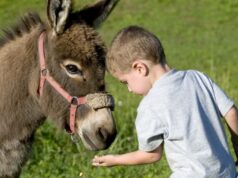
If your cat isn’t sleeping or hunting white-footed mice that pester your backyard, it wants to talk. Every little ‘meow’ is a meaningful message. But how can you interpret the cat’s signals? To learn about the optimal amount of sleep your cat should be getting, please visit here.
Fluffy Talk
At catademy.com, they’ve already explained how cats communicate with their kin. They need no dictionary to parlay with each other — interpreting tail twitching, purring, hissing, and back arching is as instinctive to them as wanting to catch a flying moth.
But how can this mishmash of moves and noises help you understand your kitty better? It’s actually easy once you learn the simple feline ‘alphabet’.
Since cats have a hard time articulating human words, they use a system of signals that combines body language, vocalization, and certain rituals. By analyzing them, you can easily read a cat’s mood, intentions, needs, fears, and so on.
1. Eyes don’t lie
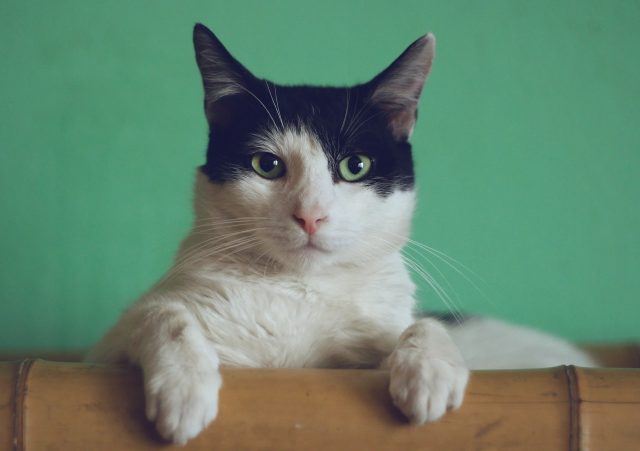
Narrowed pupils
Most often, it means that your cat’s either indifferent or disappointed. It’s a good moment to treat the rascal with its favorite ‘dessert’ or a new jingly toy.
Dilated pupils
This signal means two things. First, your cat’s alarmed or scared. Be it an infrared noise coming from a subway station nearby or a scratching mouse, the kitty will share the alert with you.
Second, it means excitement. The smell of fish liver, fresh catnip, or playtime — any of these can trigger your kitten’s euphoria.
Slow blinking
To all cats, this generally means everything’s alright. There’s no danger nearby, and no hunger torturing the fluffy tummy. Often, cats go to sleep after delivering the message. It also means I like you in their language.
And here’s a little lifehack: you can soothe your cat and put it in a relaxed, tranquil state by slowly blinking at it. You’ll know you’re successful if the kitty responds in the same manner.
2. Tail can tell a tale
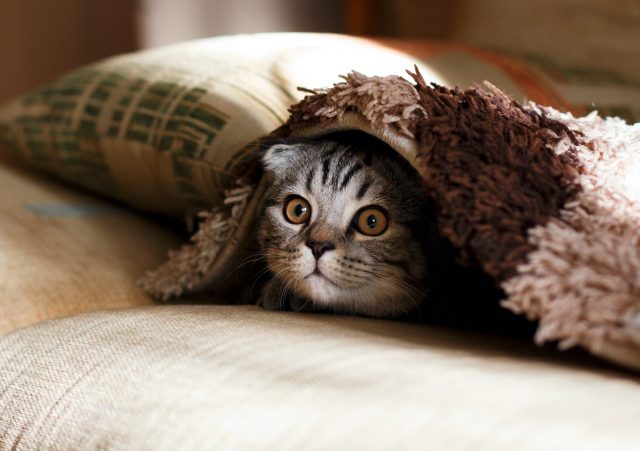
Twitching
It’s an ambiguous signal. Depending on a situation, it shows impatience, exasperation, or playfulness. If you pet the cat in the middle of a ritual — like washing — tail twitching will politely tell you ‘Piss off, please.‘
Wagging
This is a serious warning. If your cat wags the tail, you know one thing for sure: no snuggling for today. In the feline world, this gesture semaphores frustration.
Depending on the wagging dynamics, you can tell how bad the kitty is vexed. Mild movement tempo basically tells you ‘Stay away from me.‘ And energetic tail oscillating means that your kitty will transform into a ferocious ocelot in less than a second.
Curving
If you see the cat’s tail mimicking the question mark — it’s playtime! The signal is especially popular among the kittens. So, if a little puss tries to attack you but its tail is curved, relax — it’s just a game, and no harm is meant.
Puffing
Funny at first, the puffed-up tail beckons either the highest degree of terror or anger. Cats employ this gesture upon encountering something scary for the first time. Like a loud vacuum cleaner. If there’s no source of fear, but the tail is still puffed up — the attack is imminent.
Tucking away
Typically, it’s a rare sign among domestic cats. This means ‘I submit to your authority.‘ This way, cats surrender if they can’t win a battle for territory. But if your kitty does it when reacting to your presence — it’s not good. It is scared of you.
Wrapping around
Cats use their tails for hugging and snuggling. If your tiny panther wraps the tail around your hand, that means ‘We are one pride.‘ It’s a sign of deep emotional connection and trust.
3. Body language
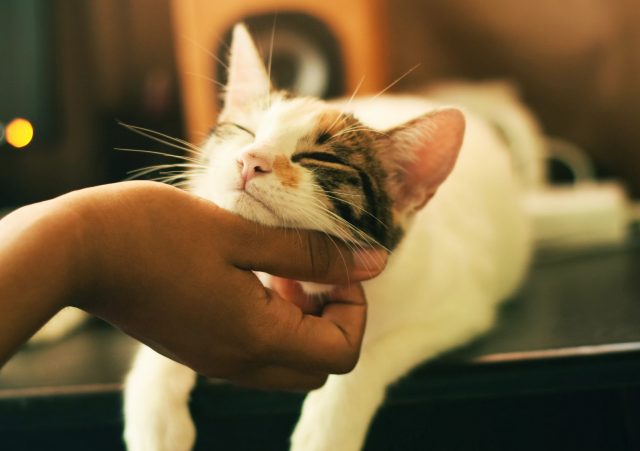
Exposed belly
It’s a universal signal for many species that means ‘I trust you.‘ Belly is one of the most vulnerable body parts that must be shielded by a specific sleeping pose in the wild nature. Your fluffster feels safe around you.
Kneading
If a cat gives you a massage, it’s definitely a good sign. They put their soft paws to work only when remembering their kittenhood days. So, don’t be surprised, but you’re associated with the loving momma-cat.
Arched spine
The meaning depends on the situation. If the cat comes to you and slowly arches its back — somebody wants attention and cuddling. If the same gesture is accompanied by bristled fur and hissing/loud meowing — it signifies terror or fury.
Face rubbing
Contrary to the popular belief, this ritual isn’t dictated by overflowing love. That’s how cats mark their territory, bed, food, mates, toys, and so on. Their faces have special glands that release pheromones that say ‘It’s mine.‘
But if the cat rubs the top of their head against your hand, it’s a polite request for petting. Plus, it’s almost a love confession.
Licking
Cats almost never lick humans. This can only happen if you’re lying next to a grooming cat. And if you get one or two licks, you can consider yourself a feline cousin, so to say. Licking is a privilege that only the closest are honored to receive.
4. Vocalization
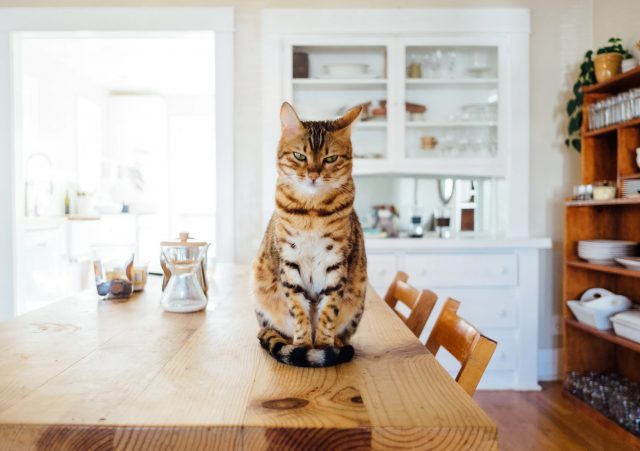
Purring
Mostly, cats purr when they feel happy. Sometimes it can be spontaneous and strange. Purring can also be a result of sniffing catnip/valerian root, smelling food that’s cooked nearby, or sensing pheromones of the opposite sex when it’s the season. (Even castrated cats can be affected).
Noiseless meow
This indicates exhaustion, hunger/thirst or illness. If this occurred repeatedly, you Mr. Whiskers needs to see a vet asap.
Guttural meowing
Quite annoying, this signal serves as a mating call. If your pet isn’t sterilized, a breeding partner or a water sprayer are the only effective remedies.
Chirping
This one sounds like meowing in falsetto. In the cat’s language that means ‘I see the prey, don’t spook it.‘ If your cat makes it often, it needs more playing. But at least its instincts work intact.
Meowring
A hybrid of purr and meow, this noise means Hello. It’s also a way to attract attention, ask for a tidbit of milk, and even say ‘thank you.‘
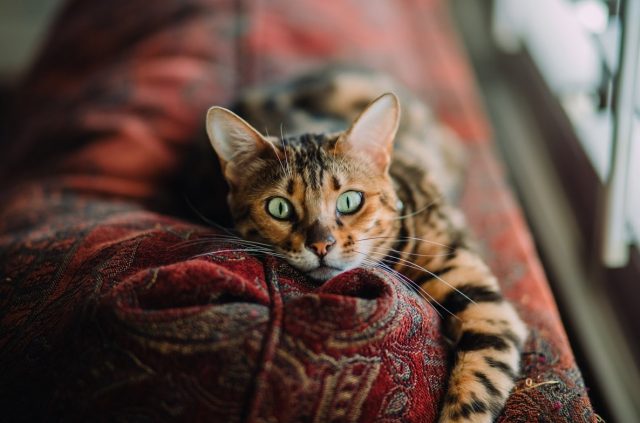
Photo by Caleb Woods
Catmunication
Now you’re fluent in the simple yet charming feline language. Use your new skills to earn more trust and love from your fluffy buddy and negotiate a better deal about approved sleeping areas in your house. Don’t be shy to talk back!


